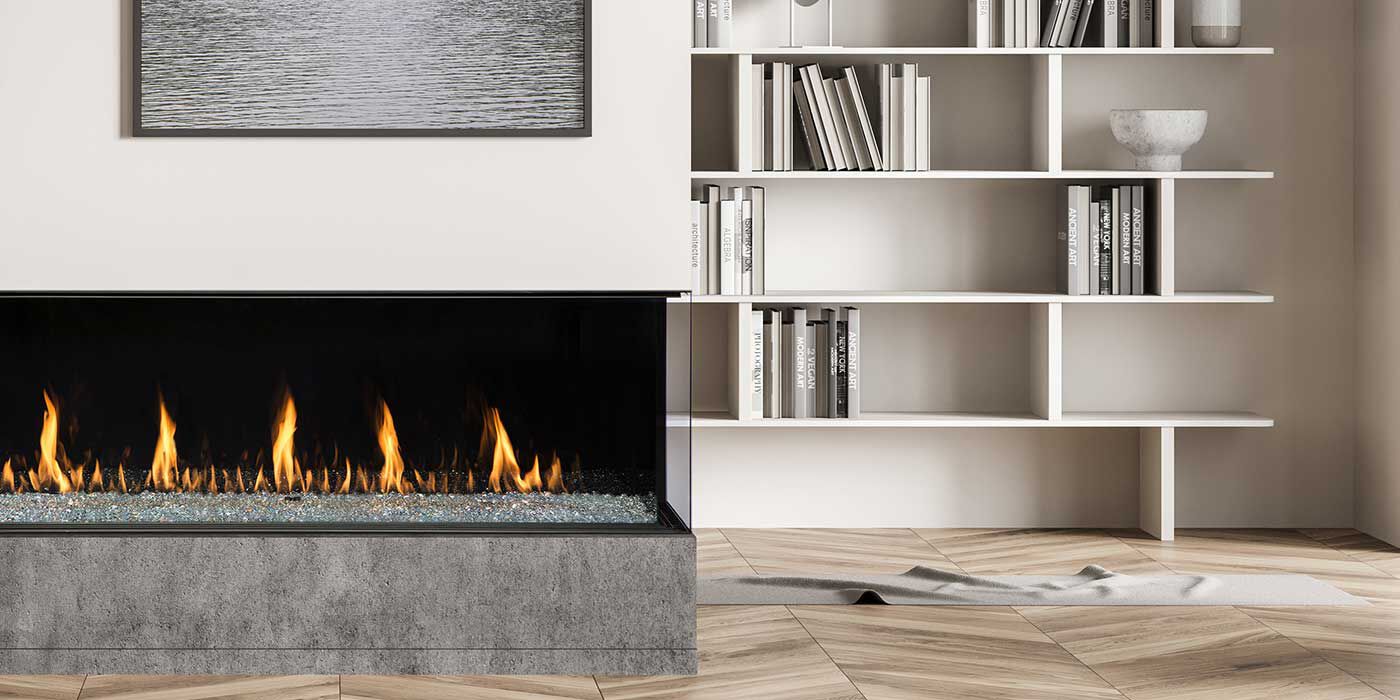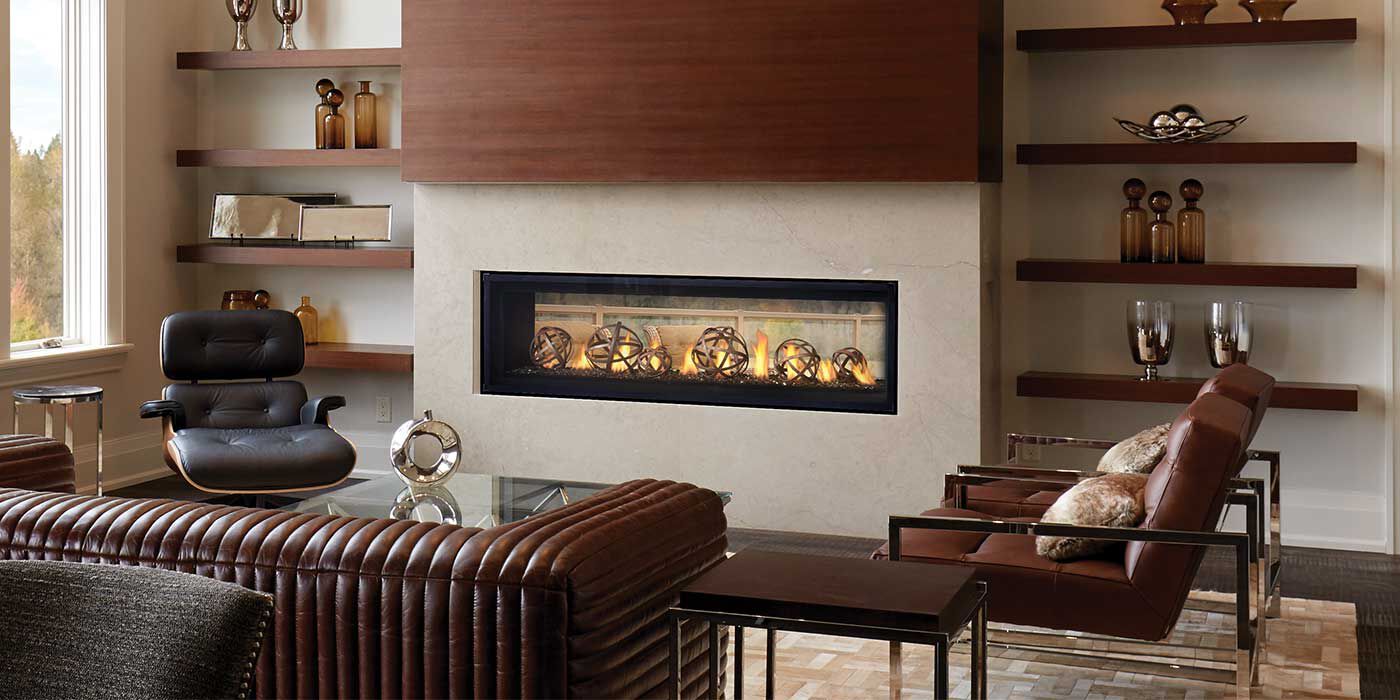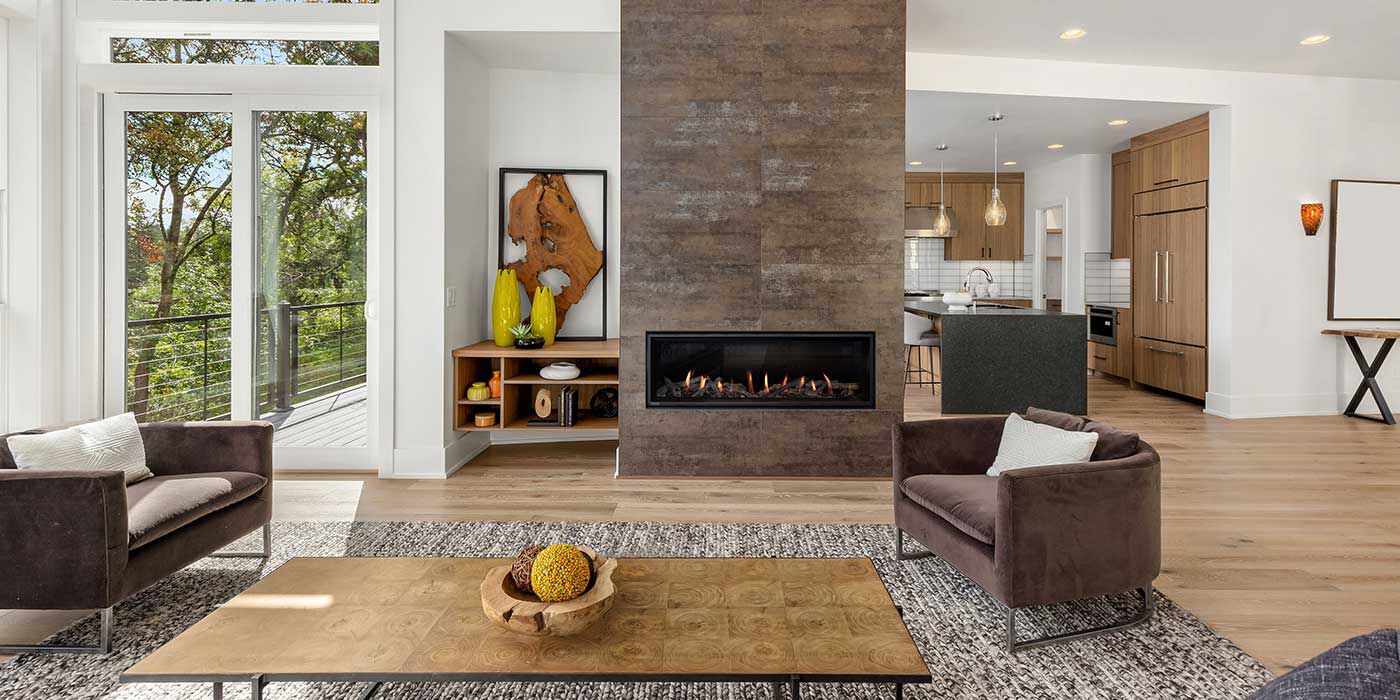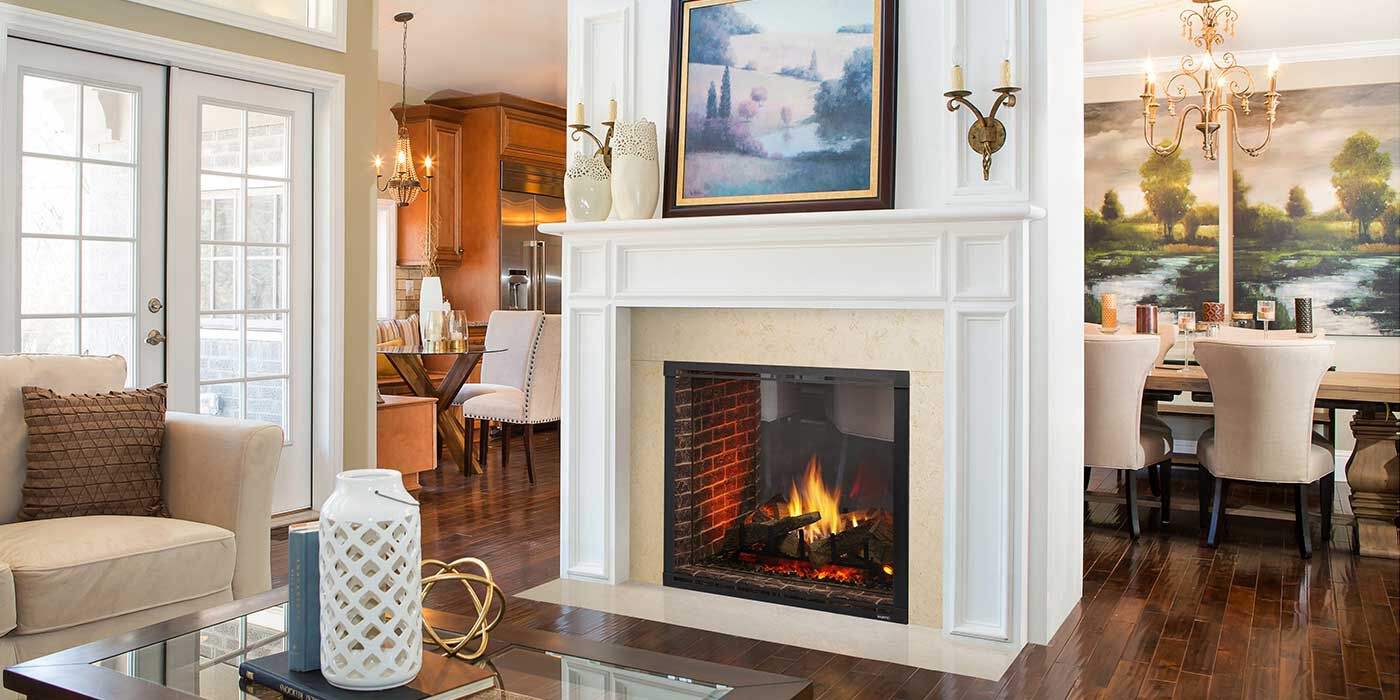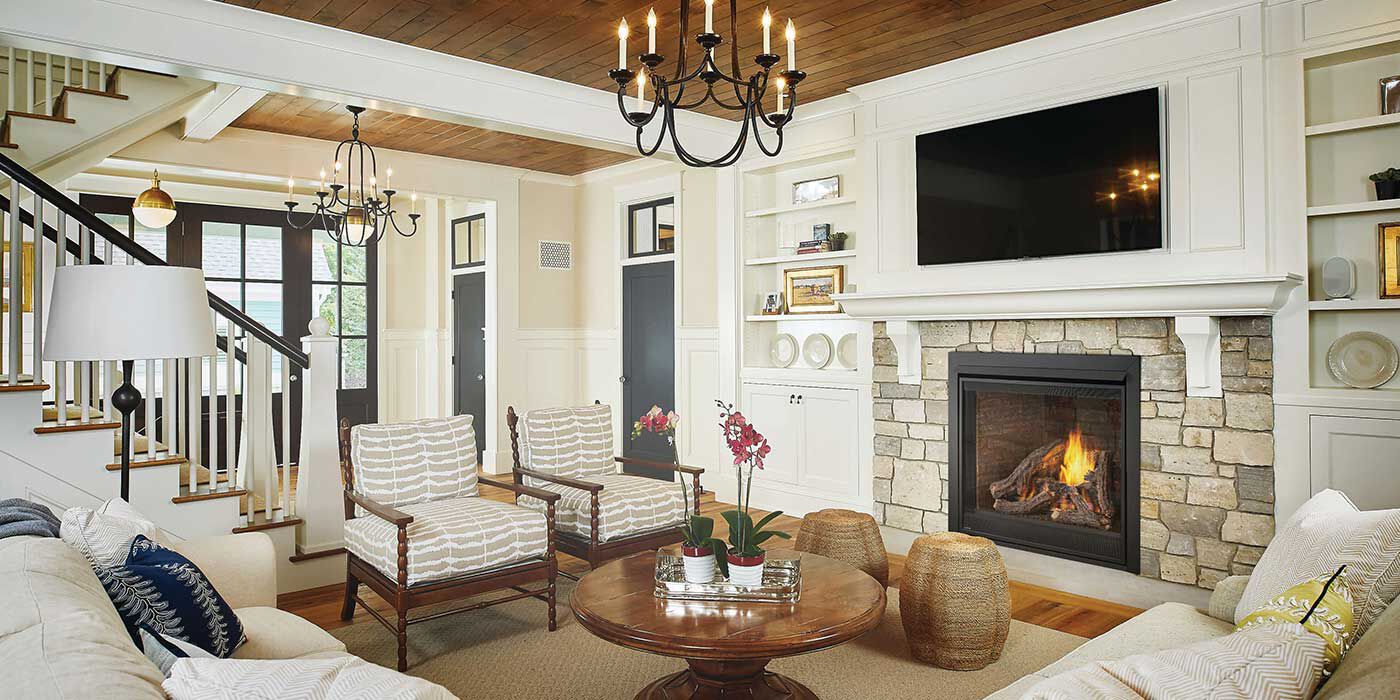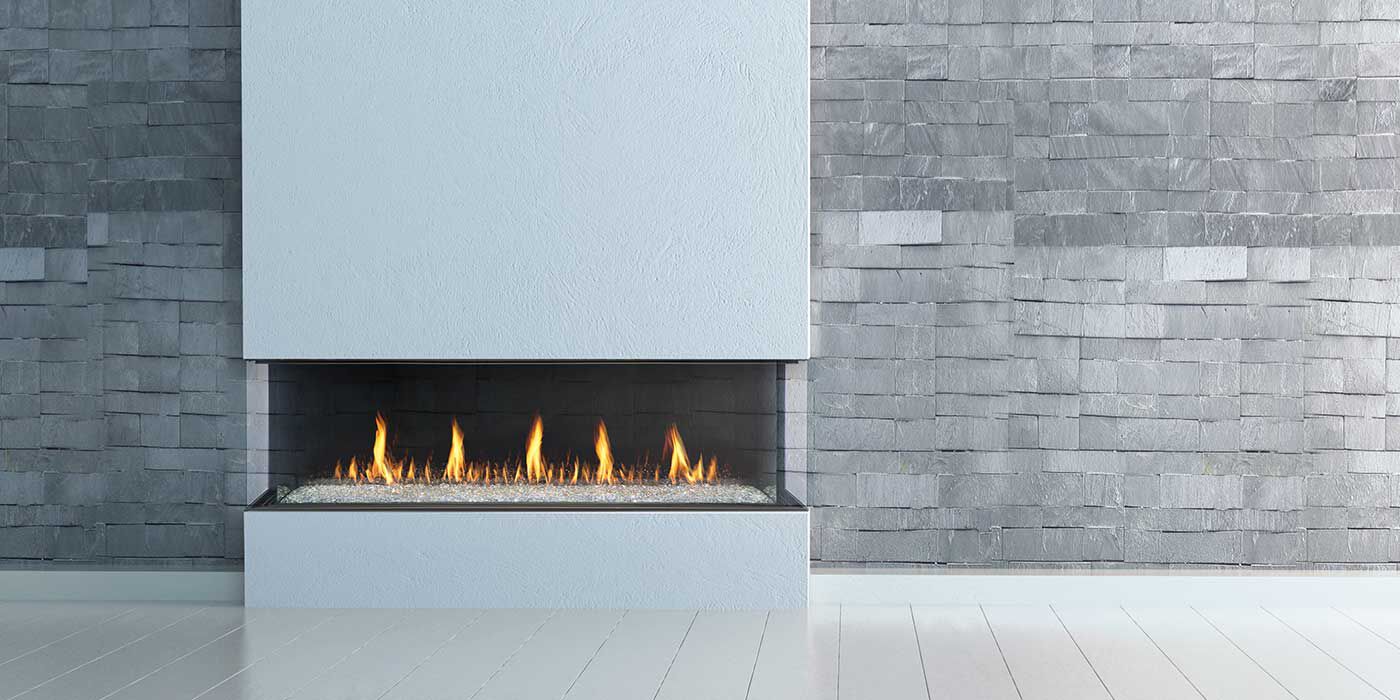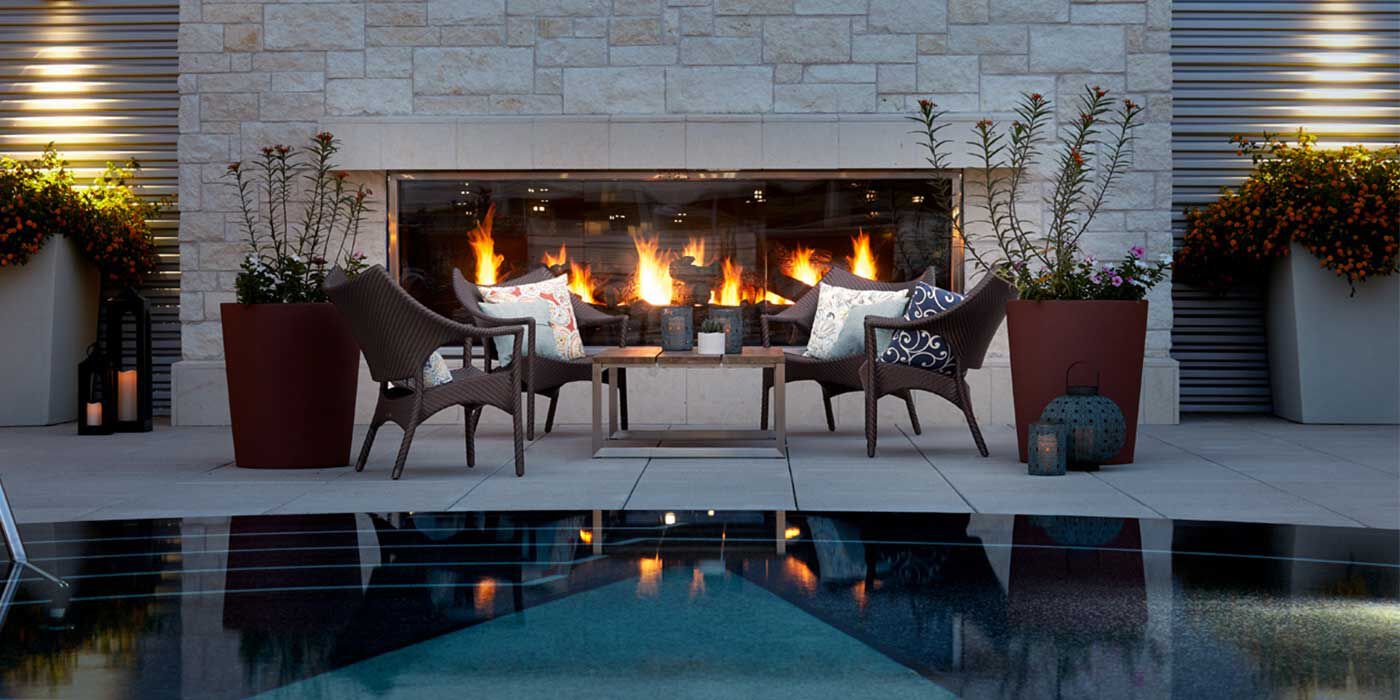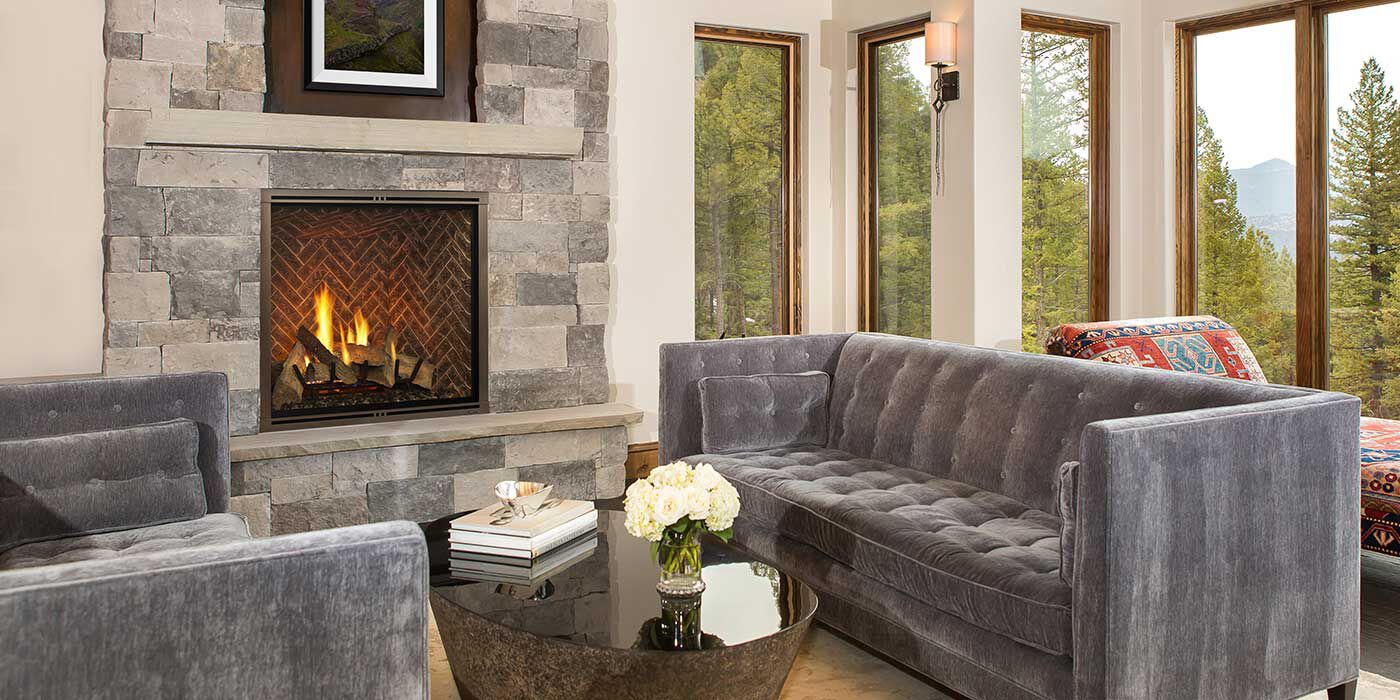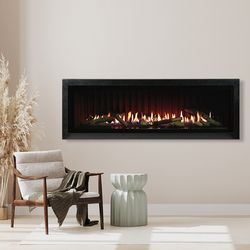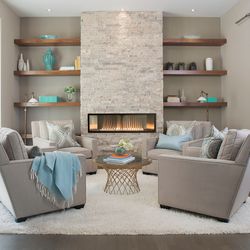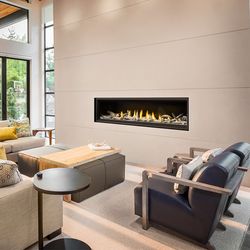By: Thomas Kearney, NFI Certified Master Hearth Professional
Last Updated: November 15, 2024
When it comes to adding warmth and ambiance to a home, a fireplace is often the top choice. Gas fireplaces have become increasingly popular for their convenience and efficiency, but like any home feature, they come with both advantages and disadvantages.
Whether you're considering installing one or want to learn how they stack up against traditional wood burning or electric models, this article explores the pros and cons of gas fireplaces to help you make an informed decision.
Pros and Cons: Quick View
Here’s a quick look at the pros and cons of having a gas fireplace in your home. Skip down for more details.
Pros
- Easy to use
- Quick ignition
- Remote & smart controls
- Adjustable flames & heat
- Built-in safety features
- No sparks or embers
- Consistent heat
- Energy efficient & clean burning
- Low maintenance (no chimney cleaning)
- Variety of designs
Cons
- High initial installation cost
- No authentic wood fire sounds or smells
- May require venting
- Poorly maintained gas fireplaces can produce carbon monoxide
- In some U.S. regions, Ventless gas fireplaces are not permitted but Direct Vent fireplaces can be used
- Ongoing cost of fuel
Pros and Cons: Additional Details
Let’s dive into the pros and cons listed above. We’ve grouped them together to make it easier to focus on what you care about most.
Pros: Easy to Use and Control
Gas fireplaces are incredibly easy to operate. With just the push of a button, you can ignite the fire, making them perfect for those who want the warmth and aesthetic of a fireplace without the hassle of chopping wood, cleaning ashes, or dealing with smoke.
Many models come with remote controls or even smartphone apps, allowing you to adjust the flame, temperature, and sometimes the color or brightness from a distance.
Pros: Consistent & Efficient Heating
Gas fireplaces provide steady, consistent heat. Unlike wood burning fireplaces, which can be challenging to keep at a specific temperature, gas units allow you to control the heat precisely.
Many modern gas fireplaces have high energy efficiency ratings. They can serve as a supplementary heat source, reducing reliance on central heating systems and potentially lowering your utility bills.
Pros: Designed with Safety Features
Typically, gas fireplaces come with built-in safety features, such as cool-touch glass or safety screens, making them a safer choice for homes with young children or pets.
Unlike open flames in wood fireplaces, which can emit sparks, Direct Vent gas fireplaces contain the flame within a sealed chamber, reducing fire hazards.
Pros: Minimal Maintenance
With no wood to burn, there won’t be any ash or soot to clean up. Gas fireplaces also don’t require chimney cleaning or extensive upkeep. Annual inspections are usually sufficient to ensure safe operation.
The cleaner burn of Natural Gas or Propane means less residue buildup, making gas fireplaces much easier to care for than wood burning units.
Cons: Initial Cost
Gas fireplaces, especially high-end models with sophisticated features, can be more expensive to install than wood burning fireplaces. This is because they require specific venting systems, professional installation, and possible modifications to existing gas lines.
Additionally, the ongoing cost of Natural Gas or Propane fuel can add up over time, although this is generally less expensive than cord wood or electricity.
Cons: Lack of Traditional Aesthetic
For those who enjoy the authentic crackling sound, smell, and ambiance of a wood burning fire, a gas fireplace may feel artificial. Although some models do a great job at replicating the look and sound of a wood fire, it’s not quite the same experience.
The “coziness” factor of a wood burning fireplace is hard to replicate, and some homeowners miss the sensory qualities that come with burning real logs.
Cons: Ventilation Requirements
Gas fireplaces are available in Vented or Ventless styles. Vented models require a flue or chimney, while Ventless gas fireplaces don’t require ventilation, allowing all the heat to stay inside your living space.
It’s important to note that Ventless fireplaces are not permitted in some areas of the country due to air quality concerns. Be sure to check your local laws regarding gas fireplaces before making a purchase.
Cons: Dependence on Gas Supply
Gas fireplaces require a continuous fuel supply, which means you’ll need to rely on either Natural Gas or Propane. If there’s a gas outage, you won’t be able to use your fireplace.
In remote or rural areas, accessing a Natural Gas line can be challenging, and Propane tanks must be refilled regularly, which can add to long-term costs.
Common Mistakes to Avoid
Here are some of the most common mistakes people make with gas fireplaces, and tips on how to avoid them.
Skipping Annual Inspections
Mistake: Since gas fireplaces are so easy to use, many homeowners assume that they don’t need any maintenance and skip annual inspections. While they are easier to take care of than wood burning models, gas fireplaces still require a thorough inspection and cleaning at least once a year.
Solution: Reach out to a licensed professional to schedule your inspection. They will be able to check for leaks, inspect your pilot light, and make sure your venting system is working properly. Inspections are the best way to prevent expensive repairs down the road.
Ignoring Ventilation Requirements
Mistake: Direct Vent gas fireplaces need proper ventilation to function safely. If installed or vented incorrectly, they can emit carbon monoxide.
Solution: If you have a Direct Vent gas fireplace, make sure the chimney or flue is clear of debris and properly sealed. If it’s a Ventless model, be sure your room has adequate airflow. You'll also need to install a carbon monoxide detector nearby for an extra layer of safety.
Not Cleaning the Glass Doors
Mistake: Some people overlook cleaning the glass doors of their fireplace, resulting in residue buildup. This can block your view of the fire and damage the glass over time.
Solution: Turn off your fireplace and wait for it to cool down before cleaning. Use a cleaner specifically designed for fireplace glass. Regular cleaning will maintain a crystal-clear view of the flames and prevent staining.
Overlooking the Pilot Light
Mistake: Some gas fireplaces have a pilot light, which is easy to overlook. The pilot must be checked periodically to make sure it stays lit. If not, the fireplace won’t function properly.
Solution: Inspect your pilot light occasionally to make sure it’s still lit. If it goes out, relight it following the instructions outlined in your owner’s manual. If the light repeatedly goes out, it may be a sign of a more serious issue that needs professional attention.
Failing to Address Odors or Strange Sounds
Mistake: Homeowners sometimes ignore unusual smells (burning odor or sulfur-like scent) and sounds (clicking, popping, or hissing) from their fireplace. These signs can indicate serious issues, such as gas leaks or improper combustion.
Solution: If you notice any strange smells or sounds, shut off the gas to your fireplace and contact a licensed professional immediately. Gas leaks are extremely dangerous, and certain noises may indicate mechanical issues that need to be repaired.
Not Using a Carbon Monoxide Detector
Mistake: Many people rely solely on their fireplace’s ventilation system, without adding extra precautions, like a carbon monoxide detector.
Solution: Install a carbon monoxide detector in the same room as your fireplace and test it regularly to ensure it works properly. This small investment can be lifesaving, especially in homes with Ventless fireplaces.
Not Buying from the Experts
Mistake: Some first-time gas fireplace buyers tend to look for less expensive models to save on their initial project costs. However, if you buy from a place that doesn’t specialize in fire features, you risk serious issues with safety and product quality.
Solution: Purchase your gas fireplace from Woodland Direct! We have more NFI certified experts on staff than anyone else in the industry. They’re available Monday through Saturday to help you make the best buying decisions, so you can confidently move forward with your project.
When you don’t buy from the experts, you might experience:
- Shipping delays & complications– We stock the most popular brands in our warehouse and offer two-day quick shipping. Some large fireplace items have to be shipped freight. This is slower and often provides an 8-hour window for delivery, instead of ground shipping with a tracking code. We’re constantly finding new ways to ship our items via ground shipping.
- Poor packaging – You paid good money for your product, and we want it to arrive in perfect condition. We update our packaging all the time, making improvements based on customer feedback to ensure safer delivery.
- Missing components – Some online sellers offer lower pricing for their products but skip all the mandatory accessories to make the cost appear cheaper. You end up with a fireplace that doesn’t work until you purchase the missing pieces, like separate controls. We recommend you read the product description carefully and compare prices.
Shop Our Best-Selling Gas Fireplaces
We’re Here to Help
Have more questions about gas fireplaces? Call our team of NFI certified experts today at 800.919.1904.
More Resources
Find the best gas fireplace for your home with our ultimate buying guide.
Determine the best way to vent your gas fireplace and what components you’ll need for a safe installation.
Learn the differences between Vented and Ventless gas fireplaces.
 |
Tom Kearney has been a Technical Sales Representative at Woodland Direct for over a decade, where he has honed his expertise in gas, wood, and pellet appliances as an NFI-Certified expert. Tom's dedication to customer satisfaction is exemplified by his work with high-profile clients, including assisting SpaceX President Gwynne Shotwell in sourcing five stunning fireplaces for her Texas home. When he's not helping clients find their perfect fireplace, Tom enjoys hitting the golf course, skiing down snowy slopes, and exploring new trails on his bike. Call him or one of our experts in fire at 800.919.1904. |
